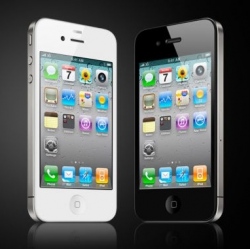
Four billion people are buying new smartphones every two years, massively outpacing the PC industry (where we buy 1.6 billion PCs every five years). Our desire for the most powerful, newest tech in our pocket is the beginning of a symbiotic merger between human and machine. This post is about this metatrend.
How many of us don’t let our mobile phones get out of our sight? How often are they more than a meter or two from our grasp? Smartphones and tablets now take up half of the consumer electronics industry.
Infinite Computing & Sensing
The power of smartphones comes from the unique mix of connectivity, computing and sensors it brings into our lives. Let’s take a look. With a glimpse of what’s to come, Sprint has already demonstrated an over-the-air speed of 1 gigabit per second at their Silicon Valley lab.
Connectivity: Consider that in 1991, early 2G networks clocked in at a hundred kilobits per second. A decade later, 3G networks hit one megabit per second, while today’s 4G networks sport up to eight megabits per second. But in February 2014, Sprint’s CEO Dan Hesse (now retired) announced plans for Sprint Spark, a super-high-speed network capability able to deliver 50 to 60 megabits per second to your mobile phone.
Computing: Just three or four decades ago, if you wanted to access a thousand core processors, you’d need to be the chairman of MIT’s computer science department or the secretary of the U.S. Defense Department. Today the average chip in your cell phone can perform about a billion calculations per second. Yet today has nothing on tomorrow. As MIT Technology Review points out, “Generations of chip-making technology are known by the size of the smallest structure they can write into a chip. The current best is 14 nanometers, and by 2020, in order to keep up with Moore’s Law, the industry will need to be down to five nanometers.
This is the point where IBM hopes nanotubes can step in. The most recent report from the microchip industry group the ITRS says the so-called five-nanometer ‘node’ is due in 2019.” Beyond the processing power in your phone (a super computer by all standards), your smartphone has access to truly infinite computational power on the cloud over its multi-megabit linkage.
Sensors: Sensors are the real magic. The growing suite of sensors in our phones is extending our abilities, slowly making us superhuman. The smartphone is our future JARVIS, making us future Tony Starks. For example, in an iPhone, the basics include a proximity sensor, ambient light sensor, accelerometer (senses the orientation of the phone), magnetometer (measures the strength and/or direction of the magnetic field), and a gyroscope.Of course we also have an incredible 8-megapixel camera and microphone to look and listen.
Beyond what’s packed into the phone, your device can connect to the Internet of Everything surrounding you, extending its “sensing capabilities” by orders of magnitude.
